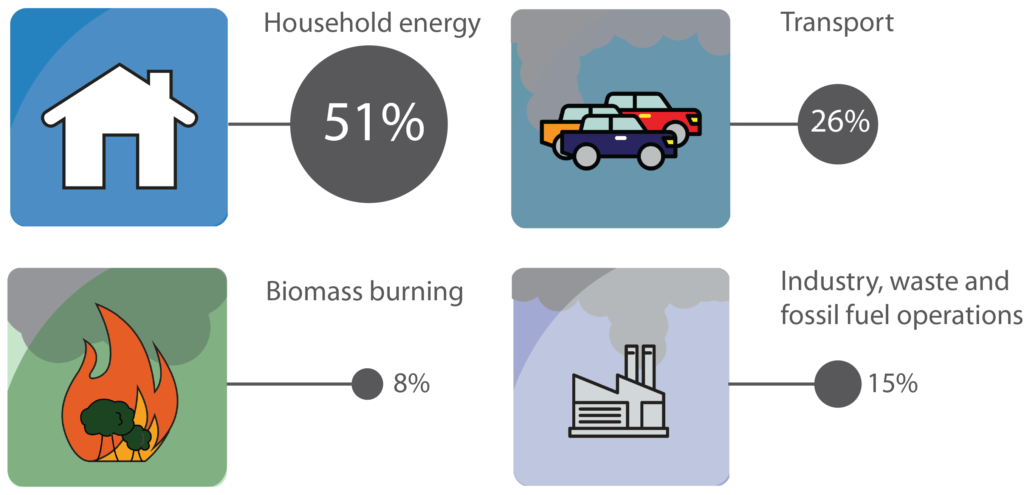Emissions of black carbon
Black carbon (BC) has a positive radiative forcing and thus contributes to global warming. However, it is also short-lived making it an interesting target for mitigating warming on short timescales, which would have benefits for air quality as well. The main sources of BC include road transport, household cooking and heating, and biomass burning.
The climate impact of BC is highly uncertain – spanning an order of magnitude and is likely to be as important as that of N2O. Global models run with BC emission inventories systematically underestimate radiation absorption by BC relative to observations, which is often attributed to an underestimation in BC emissions.
EYE-CLIMA will estimate BC emissions from atmospheric observations using inverse modelling. One of the challenges of this is that BC measurements differ between methods and instruments. For this reason, EYE-CLIMA will use new harmonized observational data. A further challenge is the large uncertainty in the modelled atmospheric ageing, which effects the particle’s hygroscopicity and atmospheric lifetime. EYE-CLIMA will use a state-of-the-art atmospheric chemistry transport which includes representation of particle ageing and scavenging.
EYE-CLIMA will also use the differences in absorption properties for BC from different sources to attribute BC to two main source categories, i.e., traffic and non-traffic, which will help support the implementation of policies related to BC emissions.

